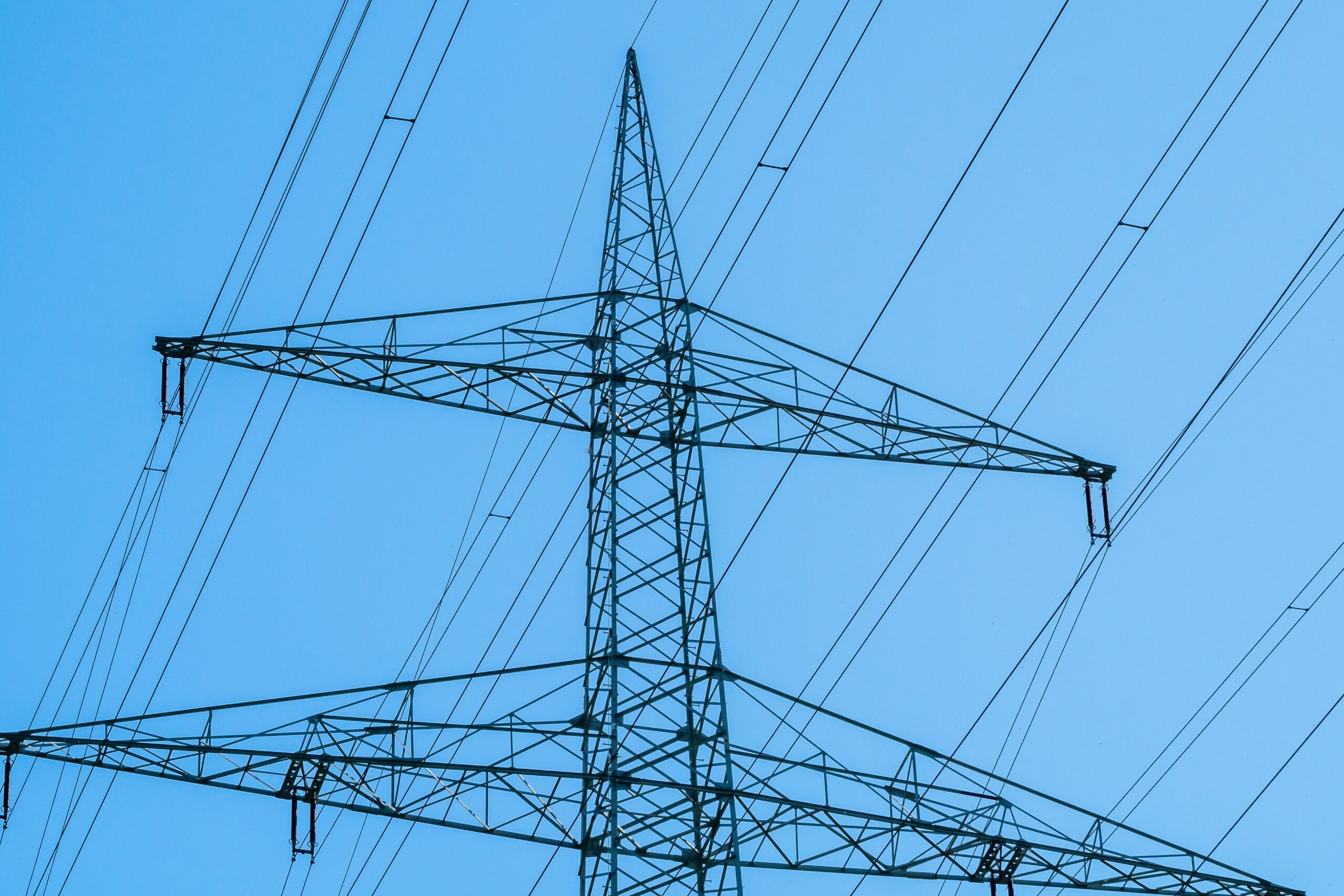There are so many reasons that people decide to go solar, like fighting climate change or wanting energy independence, but one thing everyone looks forward to is a lower utility bill. Ever wondered, though, exactly why your bill will be lower after going solar? Or what will happen if your panels produce more or less power than you need at any given time? The answers to these questions lie in an understanding of net metering.
Net Metering: a solar incentive program that gives you credit for your solar power
It’s important to understand how net metering works to see exactly why solar saves you money. Net metering is a solar incentive that allows you to “store” energy on the electric grid in the form of credits to your utility bill.
On a sunny day, when your solar panels produce more electricity than you need, that extra energy is sent to the grid in exchange for credits. Then, at night or on rainy days you pull energy from the grid and use these credits to offset the cost of that energy. Let’s break that down in more detail….
Net Metering 101
As you can see in the image below, the sun’s rays hit your solar panels on a sunny day. Those electrons then travel through wires, depicted here by the red arrows through the house.
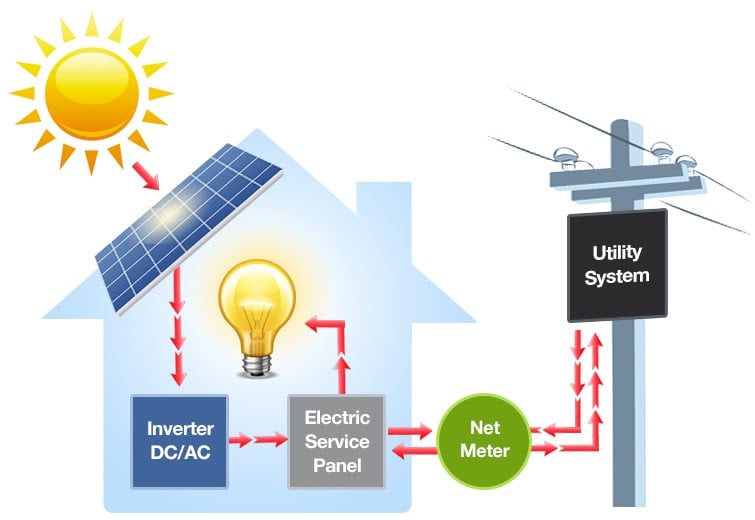
Image courtesy: mittechnews.com
The electricity comes into your house as DC power and goes through your inverter, which will be installed as part of your solar system. The inverter converts the electricity to the AC power your home can use. From the inverter, electricity then travels to your service panel which sends power to your electric appliances and any other items in your house that use electricity.
When you install a solar system, a net metering device will also be installed on the side of your house. This device measures the flow of electricity in and out between your home and the electric grid. The grid is the larger interconnected system of wires that utility companies use to transmit electricity to their customers. If those wires aren’t buried underground, then you can see them strung from towers, similar to the image above.
But what if the sun’s not out?
Now here’s where things get interesting. What happens if it rains? And what happens at night? Those little electrons won’t flow from the sun to your panels. But that’s OK, because as shown in the image below, if no power is coming through your solar panels, your system will automatically pull power from the grid instead.
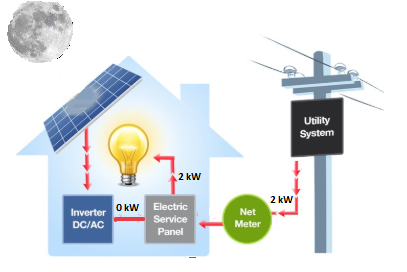 Image courtesy: mittechnews.com
Image courtesy: mittechnews.com
The cool thing is, this system is adaptable. If it’s cloudy and your panels are producing, but not enough to cover all of your needs, just enough extra power will be pulled from the grid, as shown below.
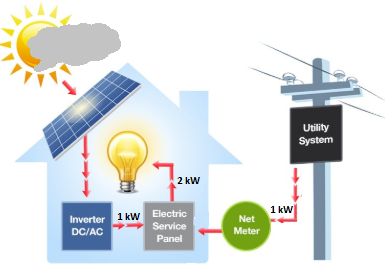
Image courtesy: mittechnews.com
The utility company keeps track of this back-and-forth process, and your bill will reflect the net energy that you have pulled from the grid. If you’ve produced more electricity from solar power than you are consuming, then your bill will reflect a credit for that power. That credit can then be used for an equal amount of electricity supplied from the grid at a time when the sun’s not out. The value of the credits are equal to the utility’s current residential electricity rates (ie. a one-for-one credit), and they will never expire.
So how, exactly, do you know when that’s happening? Well, it’s easy if you use the monitoring system we provide, and especially helpful if you add a consumption monitor.
How to keep track of your energy use and your system’s production
Your solar always comes with a monitoring system that gives you a picture of your net metering. The basic system lets you know what the panels produce, but doesn’t give you the data on what your house is using. It’s a good idea to add a consumption monitor to the system to show how you are using the energy in your house throughout the day. This requires a bit of additional hardware, but is easily added while the rest of your system is being installed.
With the addition of a consumption monitor, your system clearly shows you how much your panels are producing, how much energy you’re using in your home, and whether or not you’re pulling energy from the grid at a given time. This allows you to better understand and control your energy use.
Below is a photo of the Enphase Enlighten app, which we will provide you with when your solar system is turned on. With the addition of a consumption monitor, your app will reflect all the data you need. In the graph on the right, the light blue lines show energy production from your solar panels in fifteen minute increments. The orange lines show your home’s energy consumption. The grey lines represent energy either exported or imported from the grid; exported is below the mid-line and imported is above. On the left, you’ll see a real time representation of your energy production and use.
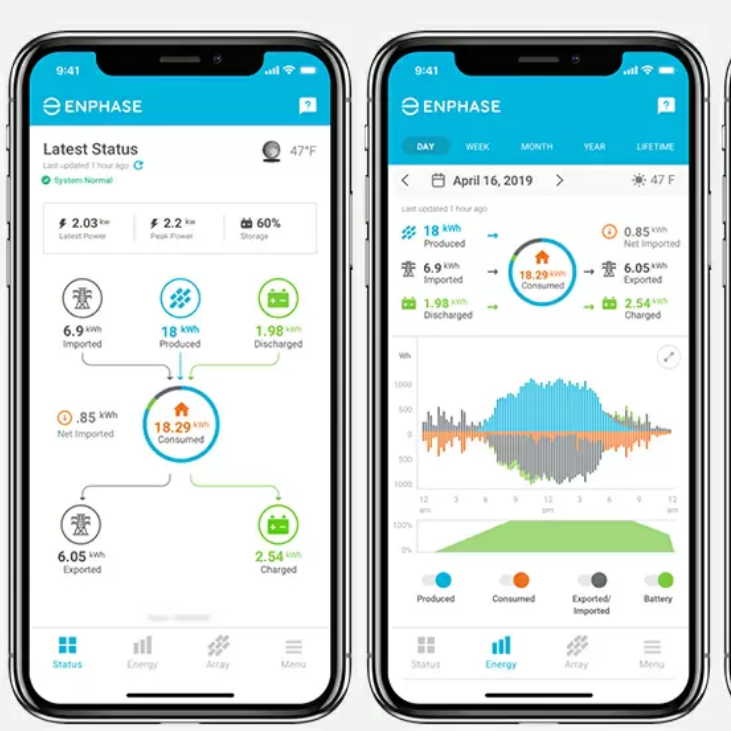
The Enphase Enlighten app allows you to monitor your energy use.
When you have this information at your fingertips you’re better able to assess how much energy you’re using throughout the day compared to what you’re producing. This visual overview gives you an idea of how you’re doing with energy efficiency and gives you insight that can help you save even more money on your utility bill.
No matter what, as long as you’re using energy in your home in the same way as you did before you installed solar, your utility bill will be lower. That’s because when your panels are producing electricity, you aren’t pulling costly power from the grid that will end up reflected on your bill.
Adding battery storage can help you manage your energy use even more wisely, in addition to giving you confidence that if the grid goes down, your power will stay on. We’re always here to help with questions about energy efficiency, production issues or battery storage, so get in touch and let us know how we can help!



